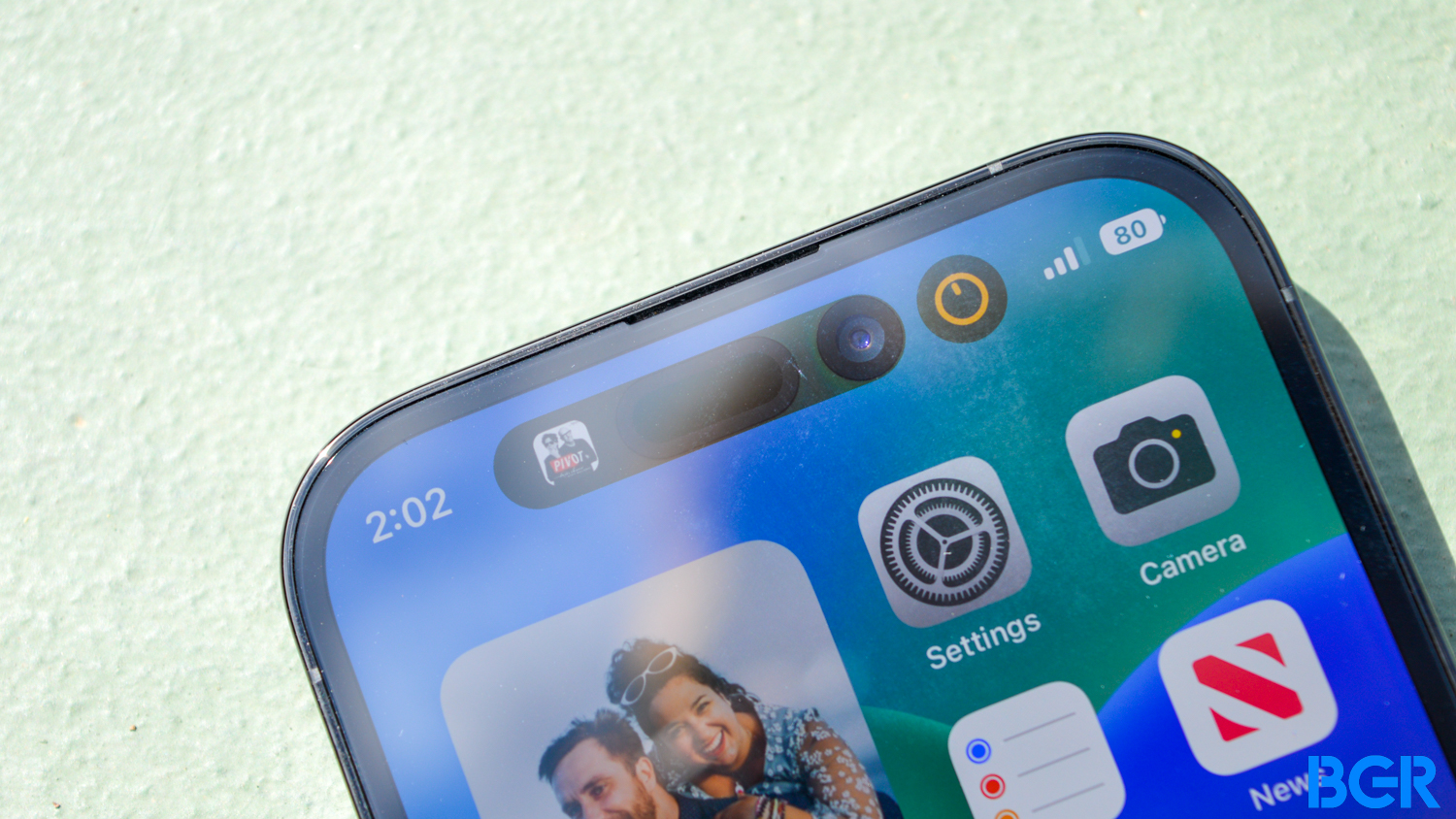We’ve been waiting for years for Apple and other smartphone vendors to deliver the perfect smartphone or a slab of glass with the display extending from corner to corner and edge to edge without any compromises. We’re getting closer to that vision, too, especially with flagship devices that feature thinner bezels than ever before.
But one “problem” remains at the top of the phone: the camera cutout. Android phones feature hole-punch designs where only the selfie camera punches through the display. The iPhone has a pill-shaped Dynamic Island that also fits the Face ID components. The Dynamic Island is the successor of the iPhone X’s infamous notch, which shrank in size in more recent models. But it’s still a huge hole in the top of your iPhone’s screen.
Before we see the selfie camera move under the iPhone screen, the Face ID components will likely be hidden. Some analysts expected the iPhone 17 to bring the first models with Face ID components placed under the screen, but that’s no longer the case.
An analyst corrected the timeline for this big iPhone design change last year. With a few months to go before the iPhone 17 series launches, an insider claims that Apple will make some design changes to the Dynamic Island on the iPhone 17 Pro Max. But Face ID won’t be dropping under the screen for quite some time.
A reliable insider from China who posts leaks on Weibo as Digital Chat Station claims the iPhone 17 Pro Max will feature metalens Face ID components. This isn’t the first time we’ve heard Apple is interested in metalens lenses, a technology that would let it shrink the Dynamic Island on iPhones.
The leaker says that’s what Apple is doing with the iPhone 17 Pro Max. The Face ID metalens optics, which will reduce the volume of the Dynamic Island. The leaker previously mentioned metalens optics for iPhones, but the new claims also apply to future iPads.
Digital Chat Station says Apple will use the same metalens optics solution for a future version of the iPad Pro and the first-gen foldable iPad. Apple reportedly wants to move Face ID components under the display, but it’ll need several generations to do it.
It’s unclear how much time Apple will need to develop Face ID components that work reliably if placed under the OLED panel. But Apple should take as long as necessary to do it right.
Face ID is a critical iPhone feature I’ve taken for granted for years. It’s how I unlock the phone and log into apps. It’s rare for face scans to malfunction, which usually happens when I change my appearance more dramatically. I wouldn’t want Face ID to fail because the OLED panel would interfere with the optics.
Display analyst Ross Young said last year Apple would place Face ID under the display starting with the iPhone 18 series, revising his earlier prediction by a year. Previously, he said the iPhone 17 would debut the technology.
Apple is expected to launch a foldable iPhone next year. It’ll be interesting to see what the Face ID setup looks like on a phone that will resemble the Galaxy Z Fold.
As for Apple’s Face ID plans for the iPad, I wouldn’t be surprised if Apple goes for metalens optics for several years before placing the Face ID sensors under the displays. There’s no real pressure to extend the iPad display by placing the cameras under it.
Separately, rumors say the foldable iPad will launch about a year after the foldable iPhone. That’s 2027 at the earliest, assuming everything goes right. If Digital Chat Station’s claims are accurate, Apple might be using metalens Face ID optics for several years, at least on the iPad.







